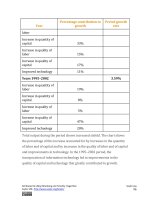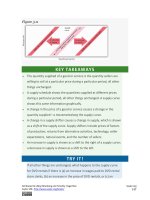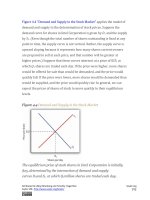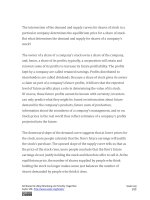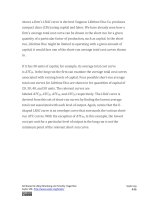Authors libby rittenberg 767
Bạn đang xem bản rút gọn của tài liệu. Xem và tải ngay bản đầy đủ của tài liệu tại đây (491.88 KB, 1 trang )
Figure 14.12 "Bilateral Monopoly" shows the same monopsony situation in
a labor market that was shown in Figure 14.3 "Monopsony
Equilibrium"The employer will seek to pay a wage Wm for a quantity of
labor Lm. The union will seek Wu, the highest wage the employer would be
willing to pay for that quantity of labor. This wage is found on
the MRP curve. The model of bilateral monopoly does not tell us the wage
that will emerge. Whether the final wage will be closer to what the union
seeks or closer to what the employer seeks will depend on the bargaining
strength of the union and of the employer.
Unions and the Economy: An Assessment
Where unions operate effectively in otherwise competitive markets, they
may reduce economic efficiency. Efforts to increase demand for American
workers through restricting imports or to increase demand for skilled
workers by restricting opportunities for unskilled workers almost
certainly reduce economic efficiency. Artificial restrictions on the supply of
labor reduce efficiency as well. In each case, the wage gain will increase the
cost of producing a good or service and thus shift its supply curve to the
left. Such efforts, if successful, increase the earnings of union members by
creating higher prices and smaller quantities for consumers. They may also
reduce the profitability of their employers.
Other attempts by unions to raise wages by increasing the demand for
their members are not likely to create inefficiency. For example, union
efforts to increase worker productivity or to encourage consumers to buy
products made by union members do not reduce economic efficiency.
Attributed to Libby Rittenberg and Timothy Tregarthen
Saylor URL: />
Saylor.org
767
